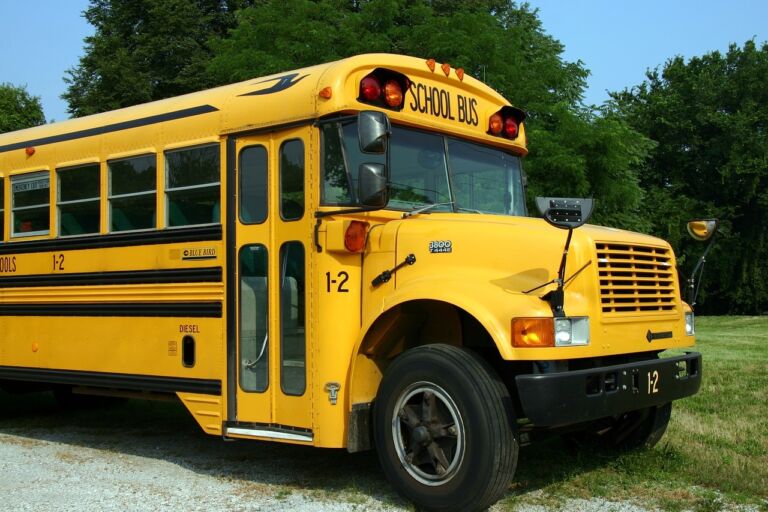- Learning loss from pandemic-driven loss of in-person instruction in public schools is a serious problem, and its impacts vary by race, income, and geography
- Legislation (HB 82) introduced in the House would do little to remedy the problem of learning loss while leaving key questions unanswered
- Education Savings Accounts offer an alternative that may be better for many families because they give parents the ability to address their children’s specific educational needs
On Monday, Feb. 15, House leaders introduced legislation to develop a six-week summer school program designed “to mitigate the impacts of Covid-19 on at-risk students.” Funding for the program would be provided as part of the $1.6 billion in COVID-19 relief that North Carolina schools are receiving from the federal government.
The legislation, House Bill 82, is an attempt to address the serious issue of learning loss caused by the loss of in-person instruction for K-12 students. As the international business consulting firm McKinsey & Company recently estimated, learning loss in mathematics could be five to nine months for white students and as much as 12 to 16 months for students of color. While legislators deserve credit for attempting to tackle this problem, HB 82’s proposal is incomplete and leaves many questions unanswered. For instance: how would it be possible to recover that much learning loss in just six weeks of summer school?
HB 82 would also provide high school students “access to modules and teacher support for credit recovery courses necessary to meet graduation requirements.” This provision is especially problematic as a way to make up for learning loss. North Carolina’s history of credit recovery is littered with horror stories of struggling students using credit recovery programs to bypass normal graduation requirements.
Another issue concerns the use of another summer school remedial program. In 2020 the North Carolina Department of Public Instruction (DPI) received $70 million to provide supplemental summer learning programs for students adversely impacted by Covid-19. Last December, State Auditor Beth Wood issued a critical audit that found DPI had no measures in place to determine whether the programs improved student ability.
Lacking such measures is a significant shortcoming, and one that HB 82 does not address. Part II of the legislation mentions “benchmark assessments” to allow teachers to measure student learning; however, the reference is vague and fails to address any of the specifics of the audit.
The lack of fiscal oversight is especially troubling given that HB 82 has no appropriation amount specified. The program could turn into a blank check.
“Learning Loss” Education Savings Accounts
An Education Savings Account (ESA) program targeted to learning loss would provide parents an alternative to HB 82’s summer school option. It would enable parents to access resources tailored to their children’s individual needs.
How would a “Learning Loss” ESA program work?
Helping parents pay for educational needs
Under a Learning Loss ESA program, approved families would be issued debit cards with state government funds for use on approved educational expenses. Participants would be able to review a list of vendors and services to see if specific expenses are approved. To guard against fraud, the state could place restrictions on how funds could be used. Approved expenses would include private school tuition, tutoring, books, testing, online learning, therapies, and instructional materials or fees.
Fund amounts
Learning Loss ESAs could come in amounts of $500 or $1,000, depending on funding availability and legislators’ commitment to the program. Federal Covid-19 relief funds should be eligible to be used to fund the program.
Eligibility
Eligibility is one of the most important questions for lawmakers to consider. Learning Loss ESAs would be open to students in traditional public or charter schools in North Carolina. Students enrolled in grades K–11 would be eligible. Lawmakers would also wish to target Learning Loss ESAs to low-performing and minority students.
To focus on those categories, lawmakers may wish to use either economic or academic criteria. Each choice has advantages and disadvantages. Lawmakers may want to target students who 1) scored “Not Proficient” on state EOG or EOC Mathematics or Reading tests, 2) attended schools that failed to meet academic growth goals, or 3) were identified by school staff as having a substantial deficiency in reading or mathematics.
While such criteria could aid targeting, those requirements would mandate that testing be completed in a timely manner and scores be delivered promptly, outcomes that are not always a certainty. There are, however, other problems. No test data are available for the most recent year. Also, remember that EOG and EOC scores do not include grades K–2. Students in those grades would need to be included either by individual assessments or by the recommendation of teachers.
Lawmakers may also wish to extend eligibility to households who are eligible for the federal free and reduced-price lunch (FRL) program. Currently, 52 percent of children in North Carolina schools are FRL-eligible. If, for instance, half of all eligible FRL students were enrolled in a $500/child ESA program, the cost of the ESA program would be $195 million.
Program administration
All decisions regarding applications would be made by the North Carolina State Education Assistance Authority. NCSEAA currently administers North Carolina’s ESA program for special-needs students.
NCSEAA would be in charge of issuing the debit cards for educational expenses to approved families. NCSEAA would also keep an updated list of approved vendors and expenses. Those practices would improve information flow and program administration and also limit fraud among recipients.
Why a Learning Loss ESA?
Because learning loss varies greatly by race, income, and geography, a broad-based solution would likely have only limited success. ESAs are a better and more effective vehicle for empowering parents to address the specific academic deficiencies of their children. They allow parents to address a child’s individual educational needs directly. These are compelling reasons why lawmakers should strongly consider a proposal for a Learning Loss ESA.


